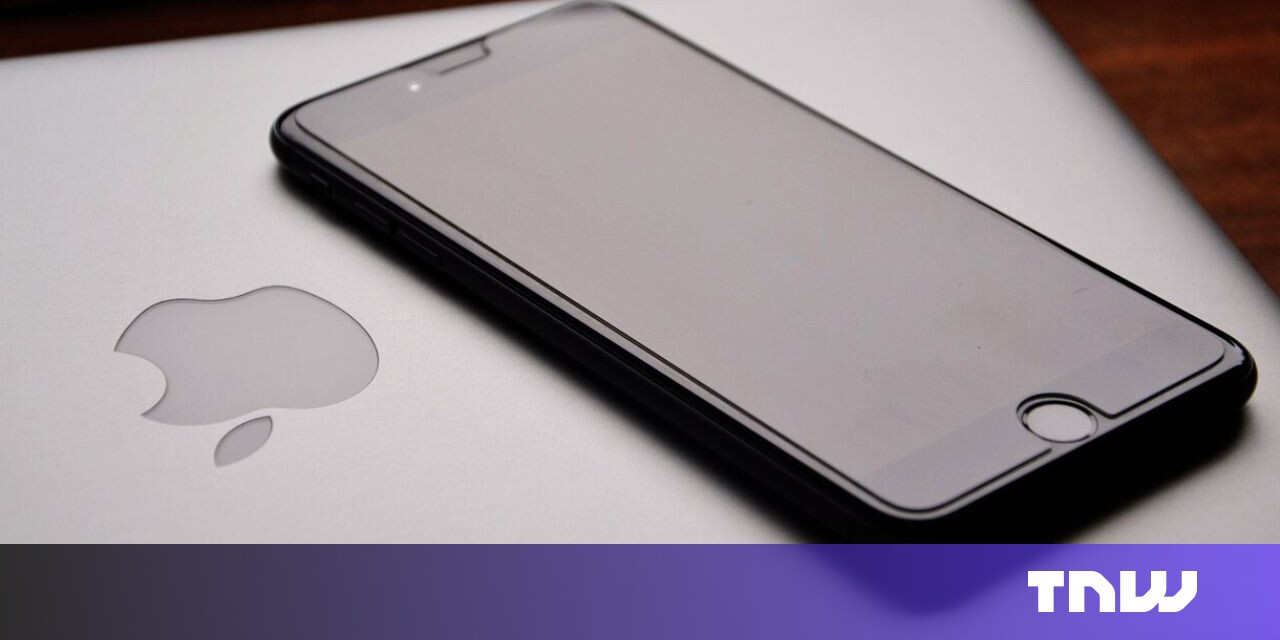#This Month In Tech History: December – Review Geek

Table of Contents
“This Month In Tech History: December – Review Geek”

The first month of winter sees some major product launches in the history of technology. One of the great video game consoles sees its start after a bitter betrayal, humans visit the moon for the final time, and the first commercially successful personal computer goes on sale. Read all about it.
December 3, 1994: Sony Launches PlayStation

Sony’s flagship gaming console, the PlayStation, actually has its origins as a Nintendo gaming system. When the “Father of the PlayStation,” Ken Kutaragi, watched his daughter play games on her Famicom, he was impressed. The Sony executive approached Nintendo about including the SPC-700 sound processor in the upcoming Super Nintendo.
Although he was nearly fired working with Nintendo without clearing it with Sony, the interaction led to a working relationship between the two companies. Nintendo contracted Sony to create a CD-ROM add-on to the Super Nintendo, dubbed the “Play Station.” But, it wasn’t meant to be. Shortly before the Play Station was to be announced at the 1991 Consumer Electronics Show, Nintendo abruptly canceled the project without informing their partner.
Sony announced the partnership and the Nintendo Play Station at CES. But, in a dramatic move for the video game ages, Sony made its own announcement the next day that canceled the Sony partnership and the Play Station. And that the company would instead partner with Nintendo’s western rival, Philips.
The betrayal incensed both Kutaragi and Sony president Norio Ohga, who resolved to make their own gaming system. Three years later, the company released the first PlayStation to the world. It became the Fifth Generation’s best-selling console, outselling the Nintendo 64 by a whopping 70 million units.
December 7, 1972: Apollo 17 Launched
Everyone knows the names of the first men to step on the Moon: Neil Armstrong and Buzz Aldren. But far fewer can recall the names of the last men to walk on Eath’s only natural satellite: Gene Cernan and Harrison Schmitt. Their mission, Apollo 17, launched for the Moon only three and a half years after Armstrong and Aldren’s voyage. It was the final mission of the Apollo program and ended an era of crewed lunar exploration.
The Apollo 17 mission set several records for spaceflight. At 12 days and 14 hours, it was the longest lunar landing mission. Cernan and Schmitt spent the most time on the lunar surface of any participants in the Apollo program, 22 hours and four minutes. And they brought back more lunar cargo than previous missions.
Additionally, this mission was the first to bring non-human life forms to the Moon. The five mice they brought along were named “Fe,” “Fi,” “Fo,” “Fum,” and “Phooey.” Although the rodents were never taken to the Moon’s surface, they share spaceflight records with Command Module pilot Roland Ellwin Evans Jr. for the longest time spent in lunar orbit (147 hours and 43 minutes) and the most lunar orbits (75).
The crew of Apollo 17 returned to earn on December 19th, 1972. NASA had planned more missions to the Moon but scrapped them because U.S. President Richard Nixon wanted to shift focus to the upcoming Skylab and Space Shuttle programs.
December 10, 1993: Doom Released

Although first-person shooter video games had been around for years, they hadn’t gained mainstream acceptance on personal computers. The technology simply hadn’t been developed yet. That all changed with id Software’s release of Wolfenstein 3D. The success of that game proved to game designers John Romero, Tom Hall, and John Carmack that the genre was ready for prime time and set out to create the company’s next game.
The team settled on a sci-fi horror theme based on their love of the role-playing game Dungeons and Dragons and tasked Hall with coming up with the basics of the game. At the end of November 1992, he delivered the “Doom Bible,” detailing an intricate story of scientists working on the Moon who accidentally opened a portal, releasing aliens (later found to be demons) onto their base. Carmack rejected the elaborate story, famously stating, “Story in a game is like story in a porn movie; it’s expected to be there, but it’s not that important.” Nevertheless, Hall’s idea of fighting demons on the Moon remained the game’s simplified premise.
Over the course of 1993, Hall became more dissatisfied with the course of the game as Romero and Carmack overrode his recommendations as lead designer. Matters came to a head in July, and Hall was fired and replaced with game designer Sandy Peterson to finish the work Hall began. The game’s official release date of September had to be pushed back near the end of the year.
Despite the troubled production, Doom was a smashing success upon its December release. Id Software marketed the first nine levels as freeware, with the full game available via mail order. Doom took the first-person shooter genre mainstream and even inspired the term “Doom clone” since so many games copied Doom’s gameplay premise.
December 11, 2008: Google Releases Chrome
We’ve chronicled the first browser war between Internet Explorer and Netscape Navigator in previous editions of This Month in Tech History. Spoiler alert: Internet Explorer won. But that victory was only temporary. Within just a few years of Netscapes demise, new browsers like Firefox and Safari began popping up to challenge Microsoft’s dominance in the market.
However, the second browser war really heated up when Google released Chrome in 2008. It was the first browser to implement the company’s open-source Chromium software, upon which many of today’s browsers are built (Brave, Opera, Microsoft Edge, and Amazon Silk, to name a few). The company released the Beta version of the browser on September 2nd, 2008, for Windows XP and gained 1% of the browser market almost immediately. By the end of the Beta phase, Google Chrome was well on its way to market dominance.
Users loved Chrome’s open-source nature, and when Google released cross-platform versions of the browser, even more users began adopting it. Plus, the wide variety of apps, extensions, and plug-ins helped fuel Chrome’s market share. The browser doubled the number of people using it each year until 2013, when it became the #1 web browser. Today, 65% of all people browsing the web are using Chrome.
December 17, 1997: The Term “Blog” Born

In the 2020s, blogs may seem like a past relic of internet culture. They’re still around but not nearly as dominant as they used to be. Nobody knows what the first technical blog was, but we know that Jorn Barger coined the term on December 17th, 1997. He used the phrase “weblog” to describe the list of links featured on his website, Robot Wisdom. The links were to sites he visited and wanted to highlight for his readers.
The term was quickly shortened to “blog,” and became synonymous with any website that featured quick posts, and became, in Jarvis’s words, “the cheapest, fastest publishing tool ever invented.” It wasn’t long before thousands and thousands of blogs began springing up across the internet, giving common users the means to publish whatever was on their minds at the time. The proliferation of blogs in the early 2000s brought about another term, the “blogosphere,” a loosely connected network of blogs that served as a proto-social-media-apparatus in an age of massive internet growth. And “bloggers” became, in the estimation of Huffington Post founder Arina Huffington, “the pit bulls of journalism.”
However, with the advent of “microblogging” technology such as Twitter, the dominance of social media platforms like Facebook, and audio publishing tools like podcasts, Blogs started to take a backseat in the 2010s. And while there are still hundreds of millions of blogs out there, the age of the blog is very much over.
December 19, 1974: Altair 8800 Goes On Sale
Everyone remembers their first personal computer. However, there are very few that recall anything past the Altair 8800. This microcomputer was the first commercially successful machine available to everyday users. It has its beginnings with U.S. Air Force servicemen Ed Roberts and Forrest M. Mims III. The men decided to use their background in electronics to sell model rocket kits to hobbyists. In 1969, the pair founded Micro Instrumentation and Telemetry Systems to sell their rockets in their off-duty time.
The fledgling company grew, and the pair left the Air Force by 1972 to pursue careers in the technology industry. MITS began selling radio transistors and calculators to augment their success with rockets. But it wasn’t until the mid-1970s that the company found the product it would be best known for. The Altair 8800 was sold as a kit since there were no all-in-one computers in those days. The advertisement magazine advertisement for the Altair 8800 noted that “Building your own computer won’t be a piece of cake. (But, we’ll make it a rewarding experience).” Although, you could order an assembled unit for an extra $200.
The mail-order marketing scheme paid off, and within two months of launch, MITS received more than 1,000 for the Altair 8800. By the end of May 1975, the company delivered more than 2,500 units, and 5,000 by the end of the summer. In 1976, the company released the follow-up to the Altari 8800, the Altair 8800B. And in 1977, MITS was bought by Pertec Computer Corporation, which marketed the machine as the PC 8800.
December 25, 1959: Sony Announces Its First TV

Probably everyone reading this has owned a Sony television at some point in their lives. However, those big UHD screens have their roots way back in 1959 when Sony founder Masaru Ibuka spoke of his dream for a transistor television in a magazine interview. He said he wanted a set ready to hit the shelves by the end of the year. But, the team at Sony was already hard at work on such a device when the interview went to print.
Sony first produced a prototype for a transistor TV in April 1959. With just an eight-inch screen, it was small but long and featured a carrying handle, rabbit ears, and two dials on top with four in the back. After numerous improvements and tests, Ibuka’s dream came true, and Sony announced the TV8-301 on Christmas Day, 1959.
Not only was this model Sony’s first TV to hit the market, but also the world’s first non-projection type all-transistor television. Additionally, it was the first portable television on the market, although you had to be quite strong to carry it. And it wasn’t a huge hit, as most saw such a device as a luxury and not very practical. Sony discontinued the model just two years after it hit the market in 1962.
If you liked the article, do not forget to share it with your friends. Follow us on Google News too, click on the star and choose us from your favorites.
For forums sites go to Forum.BuradaBiliyorum.Com
If you want to read more like this article, you can visit our Technology category.



